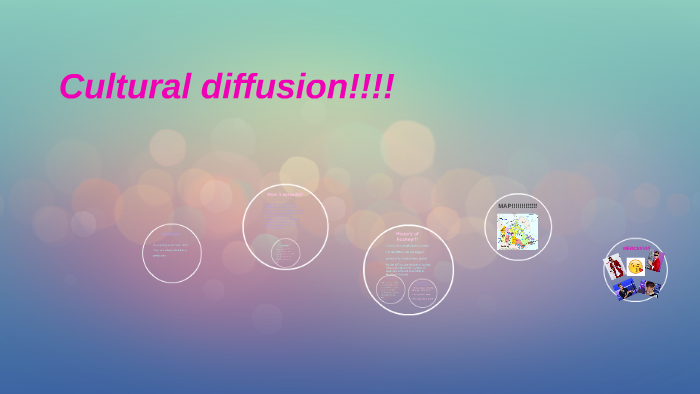Cultural diffusion, the process by which elements of one culture are transferred to another, is a fascinating phenomenon that serves as a testament to humanity’s interconnectedness. This intricate process not only shapes our societies but also reflects a deeper understanding of the human experience. A cultural diffusion PowerPoint background can visually symbolize these interactions, embodying the complexities and rich narratives inherent in cultural exchanges.
When we consider cultural diffusion, it is essential to acknowledge the various modalities through which this occurs. From trade routes that facilitated the exchange of goods and ideas to migratory movements that introduced innovative practices, the pathways of cultural diffusion are as diverse as the cultures themselves. In this rich tapestry, visuals play a pivotal role in conveying these dynamics. Therefore, a thoughtfully designed PowerPoint background can serve as a canvas upon which the intricacies of cultural diffusion can be effectively depicted.
For many, the fascination with cultural diffusion arises from a fundamental observation: culture is not static. Over time, it evolves, adapting to external influences and internal innovations. This observation can evoke a deeper inquiry into the reasons behind our intrigue with cultural exchanges. Perhaps it stems from a shared human desire to understand our roots and connections. In an age characterized by globalization, the exploration of cultural diffusion feels more urgent than ever, as we grapple with the implications of cultural exchange on local identities and international relations.
The visual representation of cultural diffusion through PowerPoint backgrounds can effectively capture the essence of these shared experiences. Bold, vibrant images that illustrate cultural artifacts, practices, and ideologies can evoke emotions and provoke thought. Incorporating maps highlighting key trade routes or migration patterns can provide a visual narrative that complements the textual elements presented in the accompanying slides. This method not only enhances audience engagement but also fosters a deeper understanding of the subject matter.
Moreover, cultural diffusion is often accompanied by a myriad of challenges and contradictions. The phenomenon can lead to the dilution of local customs, engendering concerns about cultural homogenization. Therefore, a nuanced approach is warranted when discussing the implications of cultural exchanges. Effective PowerPoint backgrounds should evoke this complexity—images should not only showcase the beauty of cultural diversity but also provoke critical discussions about preservation and adaptation.
Central to the discussion of cultural diffusion is the role of technology as a catalyst. In contemporary society, the rapid advancement of technology facilitates instantaneous communication and the exchange of ideas across vast distances. This modern context supersedes traditional methods of cultural exchange. Visually representing the role of technology in cultural diffusion can be captivating; consider backgrounds that incorporate digital symbols alongside traditional cultural imagery. This juxtaposition can articulate the transformative impact of technology on cultural practices and societal interaction.
Human interactions, from migration patterns to the spread of ideas, are often underscored by motivations that merit exploration. Economic pursuits, political agendas, and social dynamics can fuel the desire for cultural exchange. A PowerPoint presentation that encompasses these motivations can benefit from backgrounds that evoke these themes. For instance, images depicting bustling marketplaces or vibrant community gatherings can illustrate the social and economic drivers behind cultural diffusion. Such visuals not only engage the audience but also encourage them to contemplate the multifaceted nature of cultural interactions.
Additionally, the impact of cultural diffusion on the environment raises essential questions regarding sustainability. As cultures interact, practices that have long been ingrained in local ecosystems can be altered or replaced. It is vital to address how cultural exchanges may contribute to environmental challenges or, conversely, how they can promote sustainable practices. PowerPoint backgrounds could reflect this aspect by incorporating elements of nature intertwined with cultural symbols, thereby conveying an important message about the interrelatedness of culture and the environment.
In essence, cultural diffusion is not merely a benign process of exchanging customs; it is a dynamic interplay that encompasses conflict, adaptation, and synthesis. A PowerPoint background that embodies this complexity should reflect the richness of cultural narratives, using images and symbols that invite contemplation. Elements such as indigenous cultures, modern urban scenes, and historical artifacts can create a compelling visual narrative that intrigues the audience.
The perennial interest in cultural diffusion suggests that humans have an innate curiosity about one another. We are inherently social beings driven by the need to share knowledge, art, and values. This powerful impulse can often overcome barriers that seem insurmountable. In visual presentations, encapsulating this spirit through images of cooperation—such as joint artistic endeavors or collaborative initiatives—can inspire hope and solidarity among diverse cultures.
Furthermore, the role of storytelling in cultural diffusion cannot be understated. As narratives traverse borders, they carry with them the wisdom and heritage of communities. Using backgrounds that symbolize storytelling—perhaps through illustrated scrolls or dynamic oral traditions—can engage audiences and underscore the importance of narratives in maintaining cultural identity. It elucidates how stories continue to shape societies and foster empathy among people from disparate backgrounds.
In conclusion, the exploration of cultural diffusion via PowerPoint backgrounds can serve as a multifaceted lens through which to examine our collective humanity. By integrating diverse visual elements that reflect the complexity, dynamics, and implications of cultural exchange, presentations become more than just informative; they transform into profound dialogues about the essence of culture. Engaging with this subject requires a commitment to understanding both the wonders and the challenges of cultural diffusion, recognizing that every exchange carries with it the potential to enrich our world while acknowledging the nuances that accompany such interactions.
